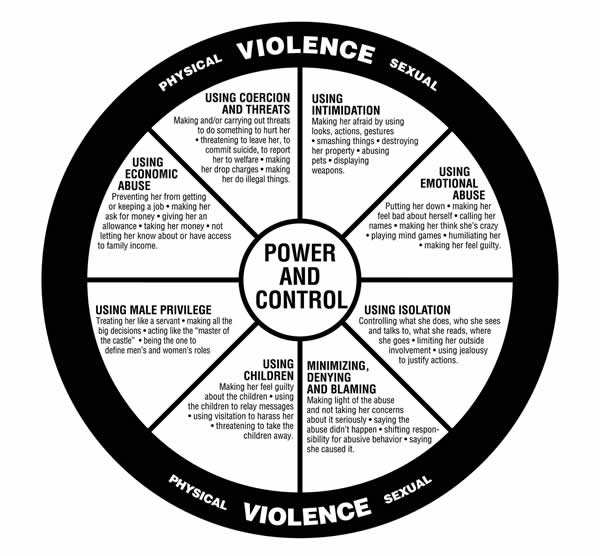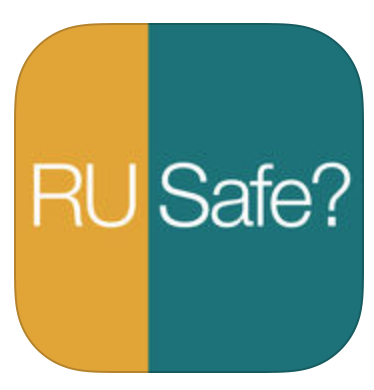Lesson 4: Intimate Partner Violence and Domestic Violence
Attention

Learning Outcomes
Upon successful completion of this lesson's material students will be able to:
- Apply the LAPC Model to a Case Study.
- Describe the Cycle of Violence and provide examples.
- Students will be able to identify common shared characteristics of batterers and victims.
- Students will learn key concepts regarding the cycle of violence, while learning to identify what, when and how interventions can be used.
- Describe what a Protection from Abuse order is and how to obtain one.
- Identify local resources for demestic violence.
Teaching
Click HERE to view this directly on YouTube
Please don't forget that batterers and battered can be of any GENDER!
Click HERE to view this directly on YouTube

Case study– Intervening with Domestic Violence Cases
Protection from Abuse - Information (PDF)
Sheila is a 41 year-old mother of six. She has been married to the same man (middle school principal) for twenty years. As a respected and experienced first-grade teacher, she is quite busy with school, childcare, housework, and other daily responsibilities that come with running a household, managing a full-time job and caring for six children who range in age from 7 to 17 years. As a devout Catholic, she believes that her husband is the head of the family and the final word of financial and spiritual matters. The family lives in a nice, two-story modular home on a large parcel of property she owns with her husband, John, and his parents. While her in-laws live on the same property, they are located on the other side of a large mountain that affords the family a good deal of privacy. The good news is that her in-laws, the Smith's, often provide free babysitting and much needed respite care when Sheila needs a break. She has a good relationship with her mother-in-law, Maude, and often cooks and quilts with her. Unfortunately, Maude and Sheila also have another thing in common. Both are frequent victims of domestic violence. While neither speaks much about it to the other, they both know when one or the other has been abused.
The latest incident was this evening. When John returned home from school, he went out to mow the back acreage. While mowing, his lawnmower hit a large rock that broke the blade. As this is the third time it has happened in the past month, he angrily rode back to the barn and, upon seeing his 17-year-old son, Tyler, yelled, "DAMN YOU! I told you to clear that land before I mowed it again! I hit another rock and broke the damn blade again." Tyler quickly responded, "I spent four hours out there yesterday. I thought I got them all. They are hard to see in the high grass." John barked back, "You know, all I ask of you damn kids is a little help around here. Why can't you do what you're told?" " I TRIED!" Tyler yelled back. Upon hearing the commotion, Sheila came out of the house. Calmly, she said, "Now come on John, Tyler worked out there all afternoon yesterday. I saw him." Before she was even able to say another word, John slapped her across the face. Before she even hit the ground, Tyler started swinging at his father. Upon getting back on her feet, Sheila pulled Tyler away and screamed, "STOP IT! GO IN THE HOUSE!" Crying, Tyler ran into the house and slammed the door. Without another word, she turned around and began walking up the road toward Maude's house. Although embarrassed, she knew she had to get some help. This time, no matter how much he cried and promised not to hit her again, she wasn't going to take him back. While he had hit her before many times, this was the first time he did it in front of one of the kids.
Unfortunately, experiences like this happen every day in Maine and elsewhere. While women are more likely to be victimized, men also experience abuse. Even more reluctant to say anything, the abused man may hit back and end up being arrested for domestic violence in a "he-said, she –said" scenario. Police tell us that it is hard to know "who started it." What is known is that this type of behavior can escalate to deadly violence. The majority of the murders in Maine occur during DV incidents. Law Enforcement Officers know that these can be some of the most dangerous calls to respond to.
Assessment
Lesson 4 Assignment
Based on the case listed in the lesson, assess the situation using the LAPC model. Assume that Sheila called the police and you, a social worker, were on a ride-along to help with the crisis. Please be very specific. I want to read at least two pages of typed information. Address the following areas:
- The listening stage
- Assessment information necessary
- What is the plan? (What needs to be done to help her right now? What steps could be taken to protect her and the children tonight.)
- How do you define commitment? How would you determine whether Sheila is willing to follow the plan?
Lesson 4 Quiz
- Describe the Cycle of Violence in detail. Give examples.
- Describe what a protection of abuse order is, how it is obtained, how long it lasts THEN comment on its usefulness. Does a Protection from Abuse Order help?
- Try the RU Safe? app. What did you think about the questions? How might you use an app like this in your work with clients?
The R U Safe app was created to be an easy to access screening tool for individuals who may be experiencing domestic violence. RUSafe is a free dangerous relationship assessment app serving the continental United States. RUSafe invites the user to answer a series of questions about her/his relationship. The app then calculates the responses and, if there is cause for concern, it will enable the user to directly call the Domestic Violence Hotline nearest them. If the user is in immediate lethal danger, she/he can call 911 directly from the app. RUSafe is based on the Danger Assessment developed by Jacquelyn C. Campbell, PhD, RN, FAAN of Johns Hopkins School of Nursing. Learn more at www.RUSafe.net. R U Safe? RUSafe by Women’s Center and Shelter of Greater Pittsburgh Click on this link to get the app: https://itunes.apple.com/us/app/rusafe/id738019287?mt=8 |
Lesson 4 Discussion (For online course only)
Identify and describe one potential local resource where you can refer Sheila. Do you think that there are sufficient resources in your local area to help families in crisis cope with domestice violence (DV)?

